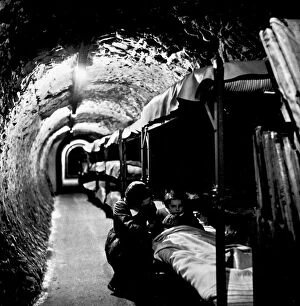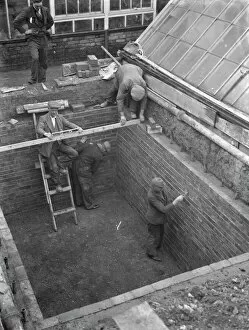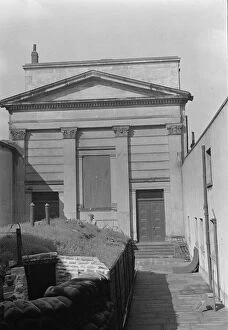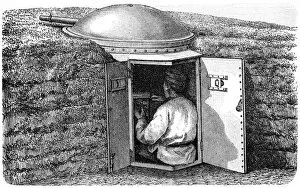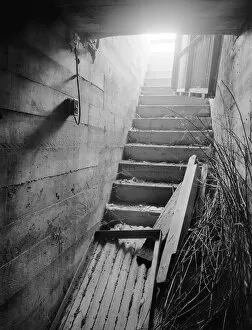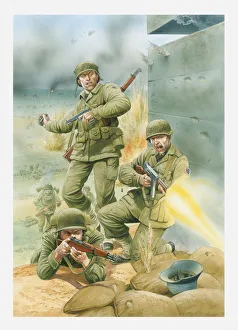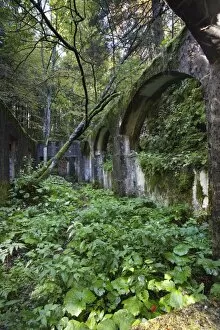Bomb Shelter Collection
During World War II, bomb shelters became a symbol of resilience and survival
All Professionally Made to Order for Quick Shipping
During World War II, bomb shelters became a symbol of resilience and survival. In London, England, a woman kneels beside her daughter in a bunk bed nestled within the safety of a subway tunnel shelter. The photograph captured by Tony Frissell tells the story of countless families seeking refuge from relentless bombings. In Hextable, amidst the chaos and destruction, communities united to build air raid shelters in their gardens. These outer foundations served as shields against enemy attacks, offering solace to those who sought protection within their walls. Even places of worship were not spared from the ravages of war. Trinity House Chapel stood strong despite being surrounded by turmoil in 1941. Its presence provided comfort and hope for those seeking spiritual guidance during these dark times. Amidst the fear and uncertainty, creativity flourished even within bomb shelters themselves. An impromptu children's show transformed an Anderson shelter into an imaginative stage where young minds could momentarily escape reality through laughter and play. The strength and determination displayed by women during this era cannot be understated. Women alongside their children prepared to sleep inside cramped bomb shelters night after night, finding solace in each other's company while braving constant threats from above. Inside these sanctuaries lay damaged beds that bore witness to the horrors endured during bombardments on February 17th, 1941. Yet despite such devastation, they remained steadfast symbols of resilience - reminders that life would continue even amidst chaos. Across the Atlantic Ocean in Garden City, New York, an American family sought refuge within their backyard bomb shelter in 1955 - proof that even years after World War II had ended; its impact lingered on people's minds as they continued to prioritize safety above all else. Pearl Harbor serves as a haunting reminder of how quickly lives can change when faced with unexpected attacks. The entrance to a bomb shelter at this naval base stands as both protection and testament to human endurance against the terrors of war.

